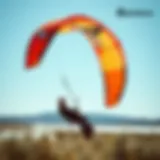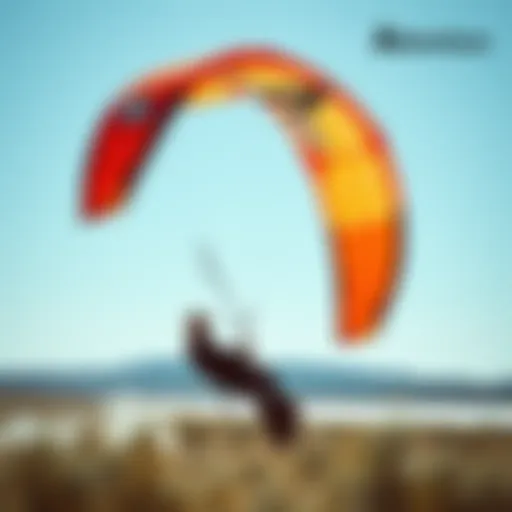Kite Surfing in Antigua: A Complete Guide for Enthusiasts
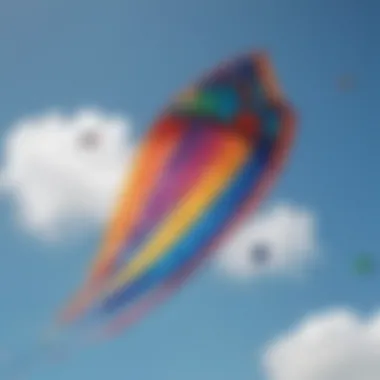

Intro
Antigua, with its stunning coastlines and crystal-clear waters, has carved a niche as a kite surfing paradise. Enthusiasts flock here to experience the unique thrill that the island offers. Its tropical climate, consistent winds, and numerous flat-water lagoons create the perfect environment for both beginners and seasoned riders alike. However, there's more to kite surfing than just hopping on a board and taking off. Understanding the nuances of gear selection, skill development, and local culture is crucial.
In this guide, we’ll delve into various aspects of kite surfing in Antigua, providing a rounded perspective on what makes it more than just a sport but a way of life. Whether you're a new adventurer or a seasoned pro, you’ll find valuable insights designed to elevate your experience while promoting a sustainable approach to this exhilarating pastime.
Gear Selection
When it comes to kite surfing, the right equipment can make or break your experience on the water. Understanding the nuances of kite types, boards, and harnesses is vital for ensuring safety and enjoyment.
Types of Kites
Kites vary greatly in shape, size, and function, affecting performance under different wind conditions.
- C-Kites: These are known for their power and precision, making them popular among advanced riders who seek high jumps and tricks.
- Bow Kites: Offering a larger wind range, bow kites are easy to relaunch and provide a beginner-friendly experience.
- Delta Kites: These kites are versatile and perform well across varied wind conditions. They are great for riders who like to explore diverse environments.
Choosing the right kite involves considering factors like wind strength, rider skill level, and intended use. For instance, if you're just starting, a bow kite might be a solid choice, while more experienced kiteboarders may prefer the responsiveness of C-kites.
Choosing the Right Board
Selecting the appropriate board complements your kite choice and helps create a seamless riding experience.
- Directional Boards: Great for surfing-style riding, these boards are preferred for wave riding.
- Twin-Tip Boards: These are versatile and allow riders to ride in both directions. They are ideal for beginners and freestyle riders.
- Foil Boards: For those seeking to explore new heights – literally and figuratively – foil boards elevate your ride over the water surface, making it feel almost weightless.
Keep in mind that the right board depends on your riding style and the conditions you'll be facing. For flat water and speed, twin-tip boards work amazing, but for small waves, a directional board might suit you better.
"A kite surfer never stops learning; every ride brings a lesson that propels you to the next level."
With the right gear in hand, you're ready to focus on sharpening your skills.
Skill Development
Every kite surfer knows that ascending the learning curve is part of the journey. Building on foundational skills while continuing to improve is both a challenging and rewarding experience.
Essential Techniques
Familiarizing yourself with essential techniques is crucial for effective riding. Coordination between the kite and board is key.
- Body Positioning: Maintaining a balanced position helps to control the kite effectively and provided stability while riding.
- Kite Control: Learning to steer the kite efficiently will enhance your overall performance. Practice controlling the kite by flying in the window and managing power.
- Edge Control: This involves using the board's edge to create resistance against the water, allowing for sharp turns and increased speed.
Progression Tips
To keep pushing your limits, consider these tips:
- Set Goals: Focus on achievable goals tailored to your skill level. Whether it’s mastering a jump or refining your turns, set incremental targets.
- Practice Regularly: The more time you spend on the water, the more natural it becomes. Find local spots around Antigua to hone your skills.
- Seek Feedback: Riding with more experienced kite surfers can provide valuable insights and tips that might help refine your technique.
As you cultivate your skills, remember that every kite surf session is an opportunity for growth. From gear selection to skill enhancement, understanding the landscape of kite surfing in Antigua will ensure that your journey doesn't just end with mastering the basics but leads to a lifetime of enjoyment on the waves.
Overview of Kite Surfing
Kite surfing, often described as the marriage of wind, water, and skill, is more than just a thrilling sport; it represents a culture of freedom and adventure. For those spanning the spectrum from interested beginners to seasoned experts, the topic at hand serves to emphasize the intrinsic value and enjoyment derived from the practice. Many enthusiasts flock to locales like Antigua, not just for the splendid weather and picturesque views but because kite surfing opens the door to a unique synergy with nature.
Diving deeper, kite surfing involves harnessing the wind's energy through a large, controllable parachute-like kite, which pulls the rider across the water on a board. It's not merely about physical skill but also strategic thinking, as understanding wind patterns and water currents can mean the difference between a great day on the waves and a challenging one.
Furthermore, as more people become aware of sustainable practices in sports, kite boarding offers a chance to connect with nature responsibly. By promoting environmentally friendly habits, the sport can coexist harmoniously with coastal ecosystems.
"Kite surfing isn't just about the ride; it's about riding the wind of change toward sustainable practices and respect for our oceans."
Engaging in kite surfing involves more than just showing up with a board and kite. It requires knowledge of essential safety practices, weather conditions that are favorable, and an awareness of local regulations. As enthusiasts wade into this exciting realm, equipping oneself with comprehensive knowledge can foster a safer, more enjoyable experience. By appreciating the vital aspects of kite surfing, individuals not only experience the thrill but become part of a larger community that values skill, respect, and connection to the environment.
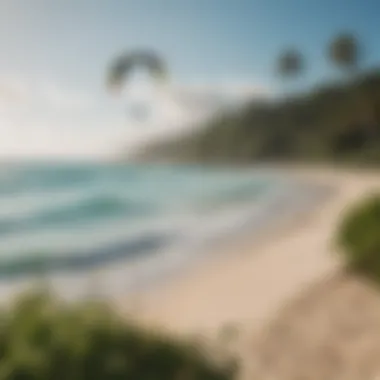

This section sets the stage for a broader exploration of kite surfing in Antigua, helping readers to appreciate not only what the sport entails but also its cultural significance and the responsibility that comes with it.
Antigua as a Kite Surfing Destination
Antigua stands out as a gem in the Caribbean for kite surfing aficionados. With its pristine beaches, consistent winds, and vibrant culture, it offers a perfect playground for both novices and experienced riders. The island’s diverse topography ensures that there are spots suited to every skills level, making it a hub for enthusiasts. Here, the intersection of clear waters and steady breezes creates not just an ideal environment but also a community that embraces and promotes the sport. The essence of kite surfing in Antigua extends beyond just the winds; it’s about the lifestyle, the camaraderie, and the excitement that comes with every ride.
Geographical Advantages
Antigua's geographical features play a pivotal role in its appeal as a kite surfing paradise. Situated in the trade wind belt, it enjoys consistent trade winds year-round. This can lead to some of the most reliable kiting conditions one could wish for.
The island is flanked by a series of beautiful beaches that not only present stunning backdrops but also provide varying conditions, catering to all preferences. Some spots are more sheltered which can allow for smoother waves, while others expose riders to more challenging elements. Additionally, the shallow waters found in certain areas make for a safer learning environment, greatly increasing Antigua's attractiveness as a destination for beginners.
Top Kite Surfing Locations
Jolly Beach
Jolly Beach is often considered the crown jewel of kite surfing locations in Antigua. With its expansive stretch of powdery sand and vibrant turquoise waters, it draws in thrill-seekers from all over.
The sprawling area allows for plenty of space to launch and land kites without the worry of crowding. Plus, the wind conditions here are typically steady, which makes it a popular choice among experienced kite surfers looking to hone their skills or try out new tricks. What's more, the accessibility of nearby amenities and beach bars means a quick refreshment is just a short stroll away after a day on the water. However, during peak tourist seasons, it can get a bit crowded.
Long Bay
Long Bay is a more remote, tranquil location and is perfect for those seeking a more laid-back kite surfing experience. The beach is bordered by lush vegetation, providing picturesque views.
The waters here can be a little less predictable than at Jolly Beach, which adds a layer of excitement for advanced riders. The waves can be challenging, presenting a more adventurous opportunity for experienced surfers. One issue here could be that the wind may not be as consistent. Thus, checking the forecast before heading out is a wise move.
Dickenson Bay
Dickenson Bay is positioned perfectly to cater to both the social aspects of kite surfing and serious riding. This place is known for its stunning sunsets and lively atmosphere. Here, you can expect a more diverse crowd, as tourists gather to enjoy the beach and participate in various water sports.
The wind conditions are often favorable, making it a sound choice for everyone from beginners to seasoned pros. However, one downside could be the presence of other activities nearby. This adds to the vibrancy but may distract some who are looking to focus solely on riding.
Seasonal Conditions
Understanding the seasonal conditions is crucial for kite surfers aiming to make the most of their time in Antigua. The winds can shift greatly throughout the year.
Wind Patterns
Antigua experiences predominantly easterly trade winds that provide consistent conditions. From December to April, the winds tend to be the most reliable, with speeds averaging around 15 to 25 knots, perfect for kite surfing.
This timeframe attracts kiteboarders from around the world eager to experience the ideal conditions. However, during the summer months, while still offering rideable winds, the conditions can be less predictable and lighter, which can make it harder for those looking to ride aggressively.
Water Temperatures
The waters around Antigua are notably warm, averaging between 77 and 82 degrees Fahrenheit year-round. This makes it comfortable for riders, reducing the need for thick wetsuits and allowing for a more enjoyable experience.
In addition, warm water increases safe riding duration, keeping fatigue at bay while also providing an overall pleasant atmosphere for extended sessions. However, bringing along sunscreen is a must, as the Caribbean sun can be quite unforgiving.
Essential Gear for Kite Surfing
When it comes to kite surfing, having the right gear can make all the difference. The right equipment not only enhances performance but also ensures a safer and more enjoyable experience on the water. In Antigua, where the conditions can be both exhilarating and challenging, investing in quality gear is crucial for every rider, whether you’re an aspiring novice or a seasoned pro.
Kites: Types and Sizes
Kites are the heart of kite surfing, and choosing the right one can feel like finding a needle in a haystack given the myriad of options available. Generally speaking, there are two main types of kites: inflatable kites and foil kites. Inflatable kites, which are more commonly used, offer versatile performance and stability. They’re great for beginners because they’re easy to relaunch from the water. On the other hand, foil kites are a bit of an acquired taste; they’re typically lighter and more efficient but require more skill to handle.
Size is another critical consideration. Kite sizes range typically from 3 to 20 square meters. As a rule of thumb, lighter riders might benefit from a smaller kite, while heavier riders will likely need a larger one. For the winds prevalent in Antigua, kites between 7 to 12 meters are commonly used.
Choosing the right kite size can dramatically affect a kiter’s ability to perform consistently and safely in varying wind conditions.
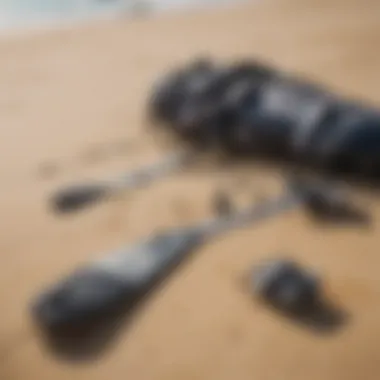

Boards: Choosing the Right Style
The board you ride is just as significant as the kite itself. There are several styles of kiteboards to cater to different riding styles and conditions. For beginners, twin-tip boards are the most favorable; they are symmetrical and allow for riding in both directions without needing to switch your stance. As you progress, you might explore directional boards. These are similar to surfboards and are ideal for riders looking to challenge themselves with wave riding.
When selecting a board, consider both the size and the construction. A longer board can help with stability and upwind performance, while shorter boards can be more agile. Beginners might want to look for a board with greater surface area to reduce the chances of sinking, especially in the flat waters around Jolly Beach.
Safety Gear and Accessories
Safety should always be top of mind when kite surfing. The wind and water can present unexpected challenges, so investing in proper safety gear is non-negotiable. Let’s break down some essentials:
- Harness: A comfortable, well-fitted harness is key. It distributes the pull from the kite evenly and gives you better control.
- Helmet: Protecting your head from sudden impacts or falls is vital, especially for those who want to catch some waves.
- Impact Vest: These vests can provide added buoyancy and protect your chest from hard landings.
You might also consider accessories like a quick-release system, which allows you to disconnect from the kite in emergencies. Moreover, a safety leash can prevent your kite from drifting away in case of a mishap.
By ensuring you are equipped with the right gear, you not only enhance your own experience but also set a standard for safety in the sport. It’s worth remembering that local shops in Antigua offer rentals as well, allowing you to test various gear before making a major purchase.
Learning to Kite Surf in Antigua
Kite surfing is not just a sport; it's an exhilarating adventure that combines wind, water, and skill. Antigua, with its breathtaking scenery and ideal conditions, invites both new and experienced riders to dive into this thrilling activity. Learning to kite surf here can be particularly rewarding due to the accessible resources and the local community’s enthusiasm.
It’s vital to approach kite surfing with proper guidance. This sport demands not just physical prowess but also an understanding of the wind and water dynamics. Being in Antigua offers a unique edge, as you can practice in the presence of stunning beaches and seasoned instructors who know every wind current like the back of their hand. What you will learn in a local school can significantly influence your development as a kiteboarder, making it easier to progress swiftly and safely.
Finding the Right School
Selecting a kite surfing school can make a world of difference, especially if you are just starting out. Antigua boasts several reputable schools, each offering slightly different approaches to teaching. When searching for the right one, consider the following factors:
- Instructor Experience: Look for schools where the instructors have certifications, such as from the International Kiteboarding Organization (IKO). This ensures they are trained to teach safely and effectively.
- Student-to-Instructor Ratio: A lower ratio provides more personalized attention, which is crucial for understanding both the technical aspects and safety precautions.
- Equipment Quality: Modern, well-maintained gear can drastically enhance the learning experience. Ensure the school offers devices that are appropriate for beginners.
- Location: Choose a school situated near one of Antigua’s prime kite spots, like Jolly Beach or Long Bay, so you can maximize your time on the water.
Beginner Classes and Resources
The first step on your kite surfing journey often involves beginner classes that cover the fundamental aspects. These classes usually include:
- Ground Control: Despite the thrill of being on the water, mastering kite control on land is essential. You’ll learn how to set up the kite, understand the wind window, and manage the lines.
- Safety Protocols: Understanding safety is paramount in kite surfing. Classes often focus on how to handle emergencies, self-rescue techniques, and respecting other water users.
- Water Time: Gradually transitioning to the water is where the real fun begins. Instructors will typically guide you through your first body drag and, eventually, riding on the board.
Resources can also include online videos, community forums like Reddit, and local meet-ups. Engaging with these materials and communities can provide additional support outside of formal classes.
Advancing Your Skills
Once you’ve grasped the basics and have had a taste of kite surfing, advancing your skills becomes the next exciting phase. Antigua's optimal weather conditions allow practitioners to hone their abilities year-round. Here are some ways to advance:
- Intermediate Classes: Joining these classes can introduce techniques such as jumping, turning, and tricks. These lessons often cater to group dynamics, allowing for a fun learning atmosphere.
- Networking and Community Events: Participate in local kite surfing meet-ups or competitions. Not only can you learn from others, but you’ll also build lasting friendships. Community events often include workshops and social gatherings where tips and experiences are shared.
- Personal Practice: Beyond classes, the best way to improve is consistent practice. Regularly hitting the water will help solidify your skills and boost your confidence.
"The journey of becoming a proficient kite surfer is much like the sport itself; it’s all about balancing the winds of the sea and the currents of time."
Learning to kite surf in Antigua isn't just about mastering a sport; it's about becoming part of a vibrant community, enjoying nature, and pushing your limits against the beautiful backdrop of this Caribbean paradise.
Cultural Aspects of Antigua
Kite surfing is more than just a sport; it’s an integral part of the fabric of life in Antigua, enriching the local culture and creating a unique community vibe. Embracing kite surfing in this enchanting Caribbean island not only opens doors to thrilling adventures but also fosters a deeper appreciation for Antiguan heritage and its vibrant atmosphere.
Local Events and Competitions
Antigua hosts a variety of kite surfing events throughout the year that attract both local and international talent. These competitions provide kiteboarders an opportunity to showcase their skills, promote camaraderie and further engage with the local community. Events such as the annual Antigua Kite Surfing Championships draw significant participation, where riders compete not just for trophies, but also to earn respect among their peers.
Furthermore, these events often incorporate local flavors, featuring music, food stalls, and craft markets. It’s a feast for the sights and sounds, as the rhythmic beats of calypso music fill the air and the aroma of traditional Caribbean dishes wafts from nearby food stands. So, it’s like the whole island – and not just the water – comes alive.
Engaging in such local kite surfing events helps build a strong sense of belonging among participants and spectators alike. They serve as great platforms for networking, sharing experiences, and learning new tricks from many skilled riders. Who knows? Perhaps you’ll pick up a few new techniques while swapping stories with others about your recent adventures or the unforgettable sessions in the wind.
Community and Networking


The kite surfing community in Antigua is not just about the sport; it’s about the people who embrace it. This community thrives on collaboration and support, making it an inclusive environment for both newcomers and seasoned riders. Social networks like forums on Reddit and dedicated Facebook groups play a significant role in connecting kite surfers, facilitating discussions on gear, techniques, and recommendations for the best spots.
In Antigua, it’s commonplace for experienced kiteboarders to offer their expertise to those just starting out. Whether it’s sharing tips on selecting the right gear or guiding someone through the nuances of local wind patterns, the supportive nature of this community is evident.
Aside from online platforms, you’ll often find kite surfers gathering at popular spots like Jolly Beach and Long Bay, forming friendships that extend beyond the beach. Barbecues, beach parties, and joint trips become a norm, creating bonds over shared passion for the sport.
Quote: *
Sustainability and Responsible Kite Surfing
Kite surfing is increasingly recognized not just for the adrenaline rush it provides, but also for the significant impact it can have on the environment. The topic of sustainability and responsible kite surfing is therefore essential for anyone who cherishes the sport. As more enthusiasts flock to unique spots around the globe, including the stunning beaches of Antigua, it becomes crucial to understand how our activities can affect these environments.
Emphasizing sustainability in kite surfing offers numerous benefits, not only for the ecosystem but also for the community and practitioners alike. By adopting responsible practices, riders can secure the beauty of Antigua's coastlines for future generations while still enjoying the thrilling experience that kite surfing provides.
The direct influence of kitesurfing on areas like coral reefs or bird habitats can be profound. When kite surfers are educated about the local environment, they can make informed choices that minimize their footprint, protecting the marine life and delicate ecosystems.
"The future of our sport depends on how we treat our environment today. Each kite surf session has the potential to either protect or harm our natural beauty."
Environmental Impact of Kite Surfing
Every sport has its environmental consequences, and kite surfing is no exception. The factors contributing to kite surfing’s environmental impact include:
- Noise Pollution: The sound from kites and boards can disturb local wildlife, particularly nesting birds.
- Physical Disturbance: Kiting can cause erosion of sandy areas and impact the natural landscape.
- Marine Ecosystem Stress: Unchecked kite surfing can disrupt marine habitats, particularly if kitesurfers venture too close to coral reefs or sensitive tidal zones.
It's important to acknowledge that while kite surfing can be invasive, there are ways to mitigate these effects. Adopting local guidelines, respecting wildlife zones, and choosing suitable launch sites can all help preserve the integrity of Antigua’s natural beauty.
Guidelines for Responsible Riding
To become a responsible kite surfer, one should consider the following best practices:
- Educate Yourself: Learn about the local environment, especially sensitive areas. Study tidal maps and understand where to launch and land your kite without disturbing wildlife.
- Respect Local Regulations: Different locations may have specific rules regarding kite surfing to protect the environment. Familiarize yourself with these guidelines.
- Use Eco-friendly Equipment: Opt for kites and boards made from sustainable materials whenever possible to lessen your environmental impact.
- Don't Leave a Trace: Carry out what you bring in. Clean up after your sessions and ensure that litter does not pollute beaches or waters.
- Support Local Initiatives: Many local organizations focus on maintaining beach cleanliness and promoting awareness of environmental issues. Engaging with these groups can further amplify responsible practices within the kite surfing community.
By following these guidelines, kite surfers can enjoy their sport while ensuring that the stunning natural settings of Antigua remain protected and enjoyed for many years to come.
Frequently Asked Questions
Understanding the common queries surrounding kite surfing is critical for anyone considering diving into this exhilarating sport. Addressing these frequently asked questions not only eases apprehensions but also helps potential kite surfers make informed choices.
Is Kite Surfing Suitable for All Ages?
Kite surfing can appeal to individuals spanning a wide age range, although the recommendation for engagement might vary based on physical capability and comfort in water sports. Generally, children as young as eight can start lessons, often requiring special size-appropriate equipment and the guidance of a certified instructor.
The thrill of kite surfing can indeed be enjoyed by older participants, too, given they maintain a reasonable level of fitness. However, older adults must be especially mindful of their physical condition and any prior injuries that may influence their ability to handle the demands of the sport.
Additionally, it's important to remember the learning curve; younger and more agile participants might progress faster, yet some older folks find that life experience comes into play, offering a degree of intuition and patience in mastering the skills.
What are the Risks Involved?
While kite surfing is often celebrated for its adrenaline and stunning views, it does carry risks. Some considerations include:
- Wind Conditions: Not every windy day is kite surfing-friendly. Violent gusts can catch anyone off guard, so understanding local wind patterns is vital.
- Water Conditions: The ocean can be unpredictable. Strong currents and busy watercraft may pose hazards to kite surfers not properly trained in avoiding conflicts.
- Equipment Failure: Though rare, equipment malfunction can happen. Regular checks and maintenance of kites, lines, and harnesses are essential for safety.
- Physical Strain: Kite surfing requires a lot of core strength and balance, which can lead to fatigue or injuries if not prepared adequately.
Ultimately, understanding these risks and preparing accordingly can help make the kite surfing experience safe and enjoyable.
Where to Rent Equipment in Antigua?
When it comes to renting equipment in Antigua, you're in luck. The island has various shops and schools catering exclusively to kite surfing enthusiasts. Some notable spots include:
- Kite Surf Antigua: Known for top-notch equipment and knowledgeable staff, they also offer lessons for beginners.
- Jolly Kite Surfing School: Located near Jolly Beach, this school rents out quality gear and aligns perfectly with those looking for a vibrant kite surfing community.
- Kite Surfing Antigua Rentals: A reliable option that provides well-maintained gear suitable for all skill levels, located in proximity to the best surf spots on the island.
Here are some tips when renting equipment:
- Inspect the gear: Before signing any rental agreements, make sure to check the condition of the kite, board, and safety gear.
- Ask questions: Don’t hesitate to clarify any concerns. An established rental shop will gladly offer you guidance.
- Consider the price: It may be beneficial to compare rates across multiple shops to ensure you’re getting fair value for your rental.
"Choosing the right equipment is just as important as learning to ride; it sets the stage for a successful experience."
This careful consideration of the equipment makes a significant difference, especially for novices stepping onto the water for the first time.


